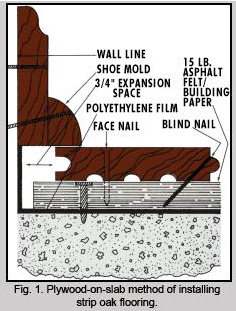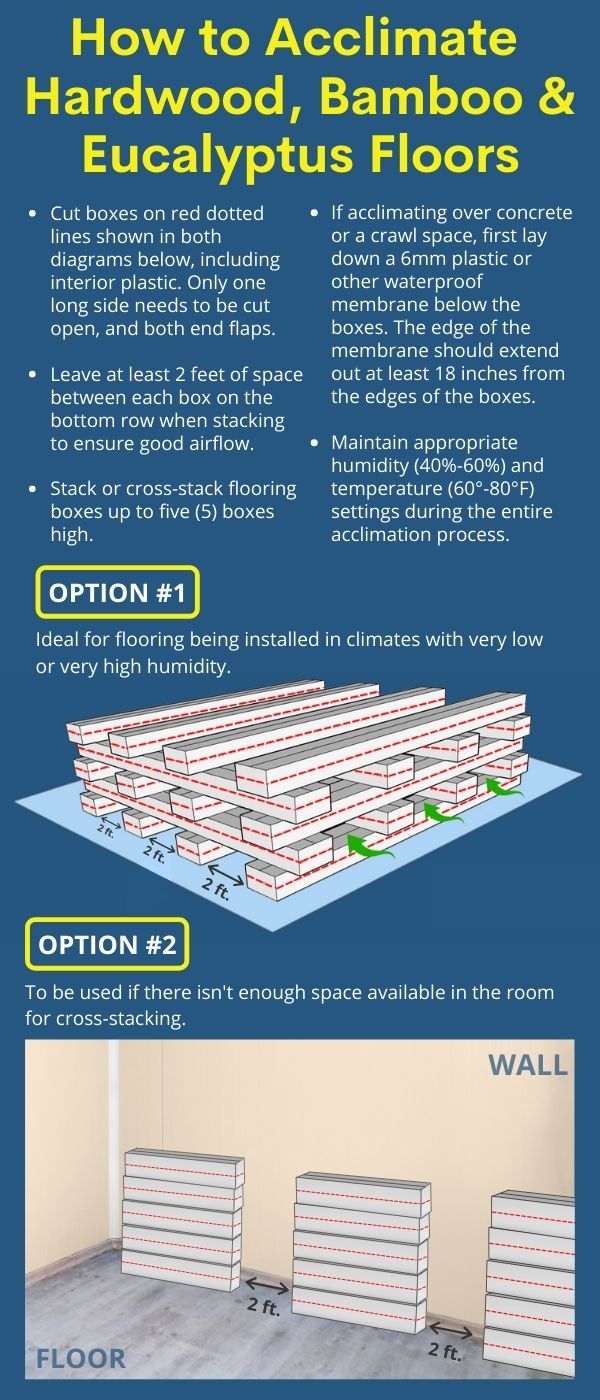Choosing the Right Bamboo Flooring
When it comes to choosing the right bamboo flooring for your home, there are several factors to consider. From the type of bamboo to the color and finish, each decision will impact the overall look and durability of your floor. This step-by-step guide will help you navigate through the options and make an informed decision that meets your needs and preferences.
Determine the Type of Bamboo Flooring:
- Solid Bamboo Flooring: This type of bamboo flooring is made from solid strips of bamboo that are compressed and glued together. It offers a traditional and durable option.
- Engineered Bamboo Flooring: Engineered bamboo flooring consists of a thin layer of bamboo on top of multiple layers of plywood. It is more stable and suitable for environments with fluctuating humidity levels.
Consider the Color and Grain Pattern:
- Natural Bamboo: Natural bamboo flooring showcases the original color and grain pattern of the bamboo plant, ranging from light beige to golden hues.
- Carbonized Bamboo: Carbonized bamboo flooring is created by heating the bamboo, resulting in a darker, amber color. It offers a warm and rich appearance.
- Stained Bamboo: Stained bamboo flooring is available in a variety of colors, allowing you to match it with your existing décor.
Assess the Finish:
- Prefinished Bamboo: Prefinished bamboo flooring comes with a protective finish applied at the factory, making it ready for installation. It offers convenience and durability.
- Unfinished Bamboo: Unfinished bamboo flooring requires finishing on-site after installation. This option allows for customization and a more seamless look.
Consider Environmental Factors:
- Sustainable Sourcing: Look for bamboo flooring that is certified by organizations such as the Forest Stewardship Council (FSC) to ensure it is sustainably sourced.
- Indoor Air Quality: Opt for low-VOC (Volatile Organic Compounds) bamboo flooring to minimize indoor air pollutants.
Evaluate the Warranty and Manufacturer’s Reputation:
- Research the warranty provided by the manufacturer. A longer warranty period indicates confidence in the product’s quality and durability.
- Read reviews and seek recommendations to ensure you choose a reputable manufacturer known for producing high-quality bamboo flooring.

Preparing the Subfloor
Before installing bamboo flooring, proper preparation of the subfloor is crucial. This ensures a smooth and long-lasting installation. Follow these essential steps to prepare your subfloor for a successful bamboo flooring project.
Assess the Subfloor Condition:
Check for any cracks, unevenness, or moisture issues in the subfloor. Address these issues before proceeding with the installation. Ensure that the subfloor is clean, dry, and free from any debris or adhesive residue.
Level the Subfloor:
Use a leveling compound to fill any low spots or uneven areas on the subfloor. This step will help prevent any unevenness in the final flooring installation.
Moisture Testing:
Conduct a moisture test to determine if the subfloor has excessive moisture content. Moisture can damage bamboo flooring, so it’s important to address this issue before installation. Follow the manufacturer’s guidelines for acceptable moisture levels and consider using a moisture barrier if necessary.
Acclimate the Bamboo Flooring:
Unbox the bamboo flooring and allow it to acclimate to the room’s temperature and humidity for at least 72 hours. This step prevents any potential expansion or contraction issues after installation.
Ensure Proper Subfloor Stability:
Check for any loose or squeaky subfloor areas. Secure loose areas and address squeaks by screwing down the subfloor to the joists.
Clean and Prepare the Subfloor:
Thoroughly clean the subfloor, removing any dust, dirt, or debris. This step ensures proper adhesion between the subfloor and the bamboo flooring.
Tools and Materials: What You’ll Need to Install Bamboo Flooring
To install bamboo flooring successfully, you’ll need the right tools and materials. Having the necessary equipment on hand will make the installation process smoother and more efficient. Here’s a list of essential tools and materials you’ll need for your bamboo flooring project.
Tools:
- Tape measure
- Chalk line
- Circular saw or miter saw
- Table saw or jigsaw
- Flooring nailer or stapler
- Hammer and nails
- Pry bar
- Tapping block
- Pull bar
- Rubber mallet
- Knee pads
- Safety goggles
- Dust mask
Materials:
- Bamboo flooring planks
- Underlayment
- Vapor barrier (if required)
- Flooring adhesive (if necessary)
- Flooring nails or staplesTransition pieces (for doorways or transitions to other flooring types)
- Wood filler
- Sandpaper
- Floor cleaner
- Finishing products (if using unfinished bamboo flooring)
Additional Supplies:
- Plastic spacers (for expansion gaps)
- Blue painter’s tape (for marking cut lines)
- Plastic sheeting or drop cloths (to protect the surrounding area)
- Utility knife
- Nailing shoe (for nailing close to walls)
- Ratchet straps (for tight seams between planks)
Installing Bamboo Flooring
Installing bamboo flooring can be a rewarding DIY project, allowing you to add beauty and elegance to your home. By following this detailed walkthrough, you can achieve a professional-looking installation. Remember to carefully read the manufacturer’s instructions specific to your bamboo flooring product for additional guidance.
Prepare the Subfloor:
- Ensure that the subfloor is properly prepared, leveled, and free from any moisture or debris.
- Acclimate the bamboo flooring planks to the room’s temperature and humidity for at least 72 hours.
Install the Underlayment:
Lay the underlayment according to the manufacturer’s instructions, ensuring a smooth and even surface for the bamboo flooring.
Start the Installation:
- Begin by laying the first row of bamboo flooring planks along the longest wall of the room, with the groove side facing the wall.
- Use plastic spacers to create the recommended expansion gap along the walls.
Install the Remaining Rows:
- Proceed with installing the remaining rows, interlocking the planks by aligning the tongue and groove edges.
- Use a flooring nailer or stapler to secure the planks to the subfloor, following the manufacturer’s guidelines.
Cut and Fit Around Obstacles:
- Measure and mark the planks to fit around doorways, corners, or other obstacles.
- Use a circular saw, miter saw, or jigsaw to make the necessary cuts, ensuring a precise fit.
Complete the Installation:
- Continue installing the bamboo flooring until you reach the final row.
- Trim the last row to fit, leaving the recommended expansion gap.
- Install transition pieces at doorways or transitions to other flooring types.
Finishing Touches
To ensure that your bamboo floor looks beautiful and lasts for years to come, paying attention to the finishing touches is crucial. Here are some tips and tricks to help you achieve a stunning and long-lasting bamboo floor.
Clean Regularly:
- Regular sweeping or vacuuming with a soft-bristle attachment helps remove dirt and debris that can scratch the surface of the bamboo floor.
- Use a damp mop with a mild, bamboo-friendly cleaner to remove any spills or stains.
Avoid Excessive Moisture:
- Bamboo flooring is sensitive to moisture, so avoid excessive water or liquid spills. Wipe up any spills immediately to prevent damage.
- Use mats or rugs in high-moisture areas like kitchens, bathrooms, or entryways to protect the bamboo floor.
Protect from Furniture:
- Place felt pads or furniture glides under furniture legs to prevent scratches or indentations on the bamboo floor.
- Lift heavy furniture when moving it instead of dragging it across the floor.
Prevent Sun Damage:
Use curtains or blinds to minimize direct sunlight exposure on the bamboo floor. Excessive sunlight can cause fading or discoloration over time.
Trim Pet Nails:
Keep your pets’ nails trimmed to prevent scratches on the bamboo floor. Place rugs or mats in pet areas to protect the floor further.
Address Scratches:
- Minor scratches can be repaired with a touch-up pen or wood filler that matches the color of your bamboo flooring.
- For deeper scratches, consult a professional for repairs or refinishing if necessary.
Installation guide: how to install a bamboo floor? BambooTouch®
Cali Bamboo Hardwood Flooring – Tips on Cutting and Installation
Related Posts:





